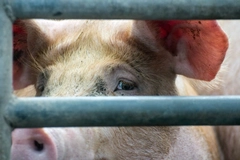
- Industry news
Industry news
- Category news
Category news
- Reports
- Key trends
- Multimedia
- Journal
- Events
- Suppliers
- Home
- Industry news
Industry news
- Category news
Category news
- Reports
- Key trends
- Multimedia
- Events
- Suppliers
Sugar Leads the Continuing Decline in Food Prices

09 Apr 2015 --- World food prices continued their decline in March, according to the FAO Food Price Index, with the decline in sugar prices leading the trend. Of the five commodities measured that contribute to the final index, only dairy prices increased, with Meat, Cereals, Vegetable Oils and Sugar all declining in March 2014.
The FAO Food Price Index averaged 173.8 points in March 2015, down 2.6 points (1.5 percent) from its revised February value and nearly 40 points (18.7 percent) below its level in March 2015. Sugar prices dipped particularly strongly in March, with more modest declines recorded by vegetable oils, cereals and meat. By contrast, dairy values rose for the second consecutive month, departing from the general negative trend that dominated the other commodity markets. Overall, except for a pause in October 2014, the Index has been falling steadily since April 2014, on account of large global supplies for most commodities included in the Index.

Sugar prices fell by 19.1 points in March, which equates to a 9.2% drop. This is its lowest level since February 2009. The decline reflected improved crop prospects in major sugar producing countries, in particular Brazil, the world's largest producer and exporter of sugar, but also the continued weakening of the Brazilian currency (Real) against the US dollar which dropped by more than 10 percent over the month.
Meanwhile, the cereal output estimate for 2014 was raised to 2 544 million tonnes mainly due to a larger than anticipated maize harvest in the European Union, according to FAO's latest Cereal Supply and Demand Brief. If confirmed, global cereal output in 2014 would outstrip the 2013 record by 1 percent.
Looking ahead to the 2015 season, global wheat production is expected to reach 722 million tonnes in 2015, around 1 percent below the current estimate for 2014, mainly due to reduced plantings in the EU. While China, India and Pakistan are all expected to harvest close to 2014's record levels, production is predicted to decline in the Russian Federation and Ukraine.
As for coarse grains, plantings are only about to start in the northern hemisphere. However, early indications in the southern hemisphere, where crops are more advanced, point to a decline in 2015 production from last year's high levels. In particular, South Africa's maize production is expected to decline sharply, by 33 percent, following severe precipitation shortfalls earlier this year.
Rice production prospects for 2015 are generally positive in the southern hemisphere countries, with sizeable increases forecast in Indonesia and Sri Lanka in Asia and Colombia and Paraguay in South America. In Australia, by contrast, output is officially anticipated to fall by 18 percent, reflecting lingering shortages of irrigation water.
FAO's forecast for world cereal utilization in 2014/15 has been raised by nearly 17 million tonnes since March, to 2 493 million tonnes. The increase largely reflects historical revisions in China and India.
The forecast for world cereal stocks by the close of crop seasons ending in 2015 has also been revised up sharply since last month's report and now stands at 645 million tonnes. The increase mainly reflects upward revisions to wheat and maize stocks in China.
Based on the current forecasts for cereal stocks and utilization, the cereal stocks-to-use ratio is expected to reach 25.9 percent in 2014/15, its highest value since 2001/02.










